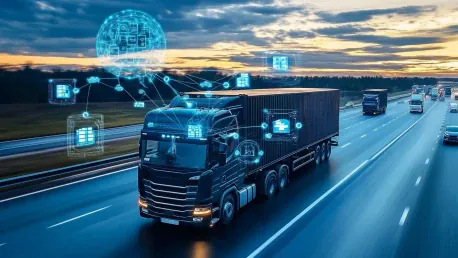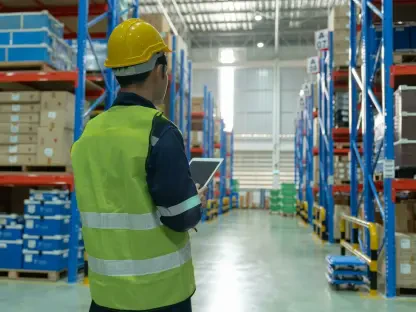The transportation and logistics industry has long been a delicate balance of meeting delivery deadlines, managing operational costs, and ensuring the smooth flow of goods and services. Today, artificial intelligence (AI) is revolutionizing this sector, making logistics smarter, more efficient, and substantially smoother. From the development of GPS tracking applications to investments in advanced operational tracking, AI is emerging as a game-changer in logistics workflows. But how is AI specifically shaping the way goods are moved and managed? This article delves into the role, benefits, real-world applications, and practical steps for incorporating AI into logistics operations.
1. How AI Fits into Transportation and Logistics
AI in logistics encompasses the use of advanced technologies like machine learning and predictive analytics to aid decision-making, reduce manual processes, and enhance supply chain efficiency. By leveraging AI, organizations can analyze vast amounts of data quickly to make better, more informed decisions than relying solely on human experience. One prominent application of AI is predictive supply chain management, enabling tools to forecast disruptions, track market trends, and suggest preemptive actions. Many businesses adopting custom logistics software with AI components have experienced improved efficiency and substantial cost savings, solidifying its importance in modern logistics operations.
AI’s ability to integrate various data sources—from GPS tracking and market trends to IoT sensors—ushers in smarter decision-making, minimizing human error and enhancing operational efficiency. Advanced AI algorithms optimize route planning, fuel consumption, and predictive maintenance, directly translating to reduced transportation costs and risks. Furthermore, the dynamic pricing capabilities of AI tools allow businesses to adjust prices based on real-time market dynamics, maximizing revenue while staying competitive. Additionally, AI-driven customer service solutions, such as AI-powered chatbots, ensure that customers remain well-informed throughout the delivery process, fostering trust and improving overall experience.
2. Key Benefits of AI in Logistics
The introduction of AI in logistics offers numerous advantages, significantly transforming the industry’s landscape. The automation of menial tasks such as processing orders, scheduling shipments, and managing documentation is a noteworthy benefit, relieving human workers from repetitive activities and reducing errors. Consequently, this allows employees to concentrate on more strategic roles within the organization. Moreover, AI’s predictive analytics facilitate smarter decision-making by analyzing data from diverse sources to streamline logistics processes, forecast demand spikes, and sidestep potential supply chain bottlenecks, thereby optimizing efficiency.
The cost-reduction potential of AI is a vital advantage. Through optimized routing, improved fuel management, and predictive maintenance, companies can significantly lower transportation expenses. Moreover, AI mitigates risk factors such as delays and inventory shortages, enhancing overall operational reliability. The incorporation of dynamic pricing strategies enabled by AI also proves invaluable, allowing companies to adapt to real-time market trends and adjust pricing to maintain competitiveness. AI-powered interactions, including automated updates and personalized responses, significantly enhance customer service, ensuring consistent communication and fostering loyalty. Additionally, AI’s optimization features contribute to more sustainable logistics operations by reducing fuel consumption and minimizing carbon emissions.
3. Real-world AI Applications in Logistics
AI’s influence in logistics is already considerably pronounced through various real-world implementations. Automation tools and robotics, for instance, are fundamental in handling routine tasks such as package sorting, inventory management, and order processing. By reducing errors and expediting processes, these technologies enhance overall operational efficiency. A prime example is Amazon’s fulfillment centers, which employ AI-driven robotics to streamline inventory management and improve delivery speed, leading to substantial efficiency gains.
AI also revolutionizes inventory tracking by utilizing IoT sensors and RFID technology, enabling real-time visibility of inventory levels. This capability prevents stock shortages, minimizes waste, and ensures seamless operations. Notably, FedEx has integrated AI-driven tracking systems to enhance supply chain visibility, granting businesses better control over shipments. Additionally, AI optimizes delivery routes by analyzing real-time traffic, weather conditions, and road closures, resulting in significant cost savings and emission reductions. Walmart’s adoption of AI-powered route optimization has effectively eliminated excess miles in its delivery network, showcasing the tangible benefits of AI in logistics.
4. How to Get Started with AI in Logistics
For businesses considering the integration of AI into their logistics operations, the following steps provide a structured approach to ensure a smooth transition:
Identify Major Obstacles: Determine the primary issues affecting logistics processes, be it elevated costs, frequent delays, or inefficient inventory management. Understanding these challenges is crucial for setting clear objectives for AI adoption.
Assess Current Technology: Evaluate the existing technological infrastructure to identify areas needing enhancement. This evaluation helps in determining the required improvements and the level of AI integration needed to achieve desired outcomes.
Organize Logistics Data: Ensure logistics data is structured, accurate, and ready for analysis by AI systems. Well-organized data is foundational for effective AI implementation, as it directly influences the accuracy and reliability of AI-driven insights.
Initiate Small Pilot Projects: Start with limited-scale AI projects to monitor performance and fine-tune systems before rolling out broader implementations. This step minimizes risks associated with large-scale changes and allows for gradual improvement.
Continuously Improve AI Systems: Keep refining AI solutions to enhance operational efficiency and business impact. Continuous monitoring and adjustments ensure that AI systems evolve in alignment with changing business needs and market conditions.
Cut Costs, Lower Delay Rates and Improve Customer Satisfaction
The transportation and logistics sector has always been a complex balancing act of meeting delivery deadlines, managing operational costs, and ensuring the uninterrupted movement of goods and services. Today, artificial intelligence (AI) is transforming this industry, making logistics operations more intelligent, efficient, and streamlined. From the creation of GPS tracking applications to advances in sophisticated operational monitoring, AI is proving to be a pivotal force in reshaping logistics processes. But in what ways is AI specifically influencing the management and movement of goods? This article examines AI’s role, its benefits, real-world applications, and the practical measures for integrating AI into logistics operations. With AI, the logistics industry can look forward to enhanced accuracy in delivery times, reduced costs, and improved customer satisfaction.









